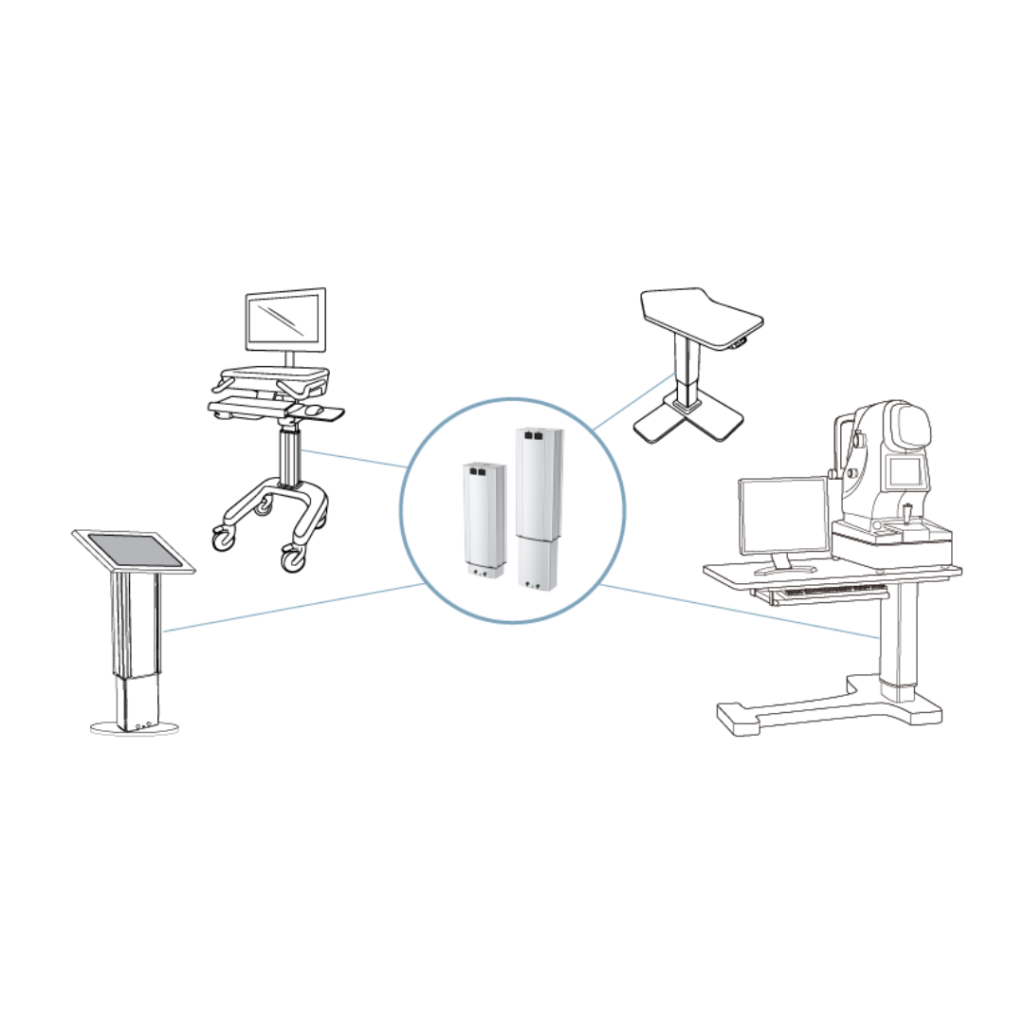The Role of an Electric Lifting Column in Ophthalmic Medical Equipment

The ophthalmic industry in India is rapidly advancing. Consequently, there is an increasing demand for high-precision medical equipment that enhances patient comfort and improves diagnostic accuracy. One essential component in modern ophthalmic devices is the Electric Lifting Column for Ophthalmic Equipment, which provides smooth height adjustability and precision positioning for ophthalmic instruments.
As a result, these motorized lifting solutions ensure seamless operation, improving efficiency for ophthalmologists and patient experience.
Understanding the Electric Lifting Column
An Electric Lifting Column is a vertical lifting mechanism powered by an electric motor, enabling height adjustments in medical devices. In ophthalmology, these columns are integrated into ophthalmic motorized tables, diagnostic workstations, and optometry chairs. Most importantly, their primary functions include:
- Ergonomic Positioning – Enabling doctors and patients to achieve the perfect height alignment.
- Precision Motion – Ensuring smooth and accurate height adjustments.
- Quiet & Efficient Operation – Creating a comfortable medical environment.
Key Features of a High-Quality Electric Lifting Column

When selecting an Electric Lifting Column for Ophthalmic Equipment, several essential factors must be considered. Therefore, it is important to focus on the following key aspects:
1. Heavy-Duty Performance
The heavy-duty lifting column is designed to support substantial weight loads. Consequently, it is ideal for various ophthalmic instruments like slit lamps, fundus cameras, and autorefractors.
2. 12V Electric Lift Cylinder
A 12V electric lift cylinder ensures stable, efficient, and quiet motion. Thus, it provides reliable power for ophthalmic applications.
3. Precision Linear Actuator
A precision linear actuator enhances positioning accuracy. Therefore, it ensures better diagnostic outcomes in ophthalmology.
4. Cost-Effective & Durable
The Electric Lifting Column for ophthalmic Price in India depends on its specifications and customization. However, investing in a high-quality lifting column ensures long-term durability and minimal maintenance.
Applications of Electric Lifting Columns in Equipment

Electric lifting columns play a critical role in ophthalmic devices. In particular, they are widely used in the following applications:
- Ophthalmic motorized tables – Enabling seamless height adjustments for various eye care procedures.
- Slit lamp stands – Ensuring accurate positioning for eye examinations.
- Optometry chairs – Offering smooth height adjustments for patient comfort.
- Fundus photography equipment – Providing stable, precise movement for ophthalmic imaging.
Why Choose a Reliable Electric Lifting Column?
Selecting the right Electric Lifting Column is essential for ensuring efficiency, reliability, and comfort. For this reason, Polar Automation, a sister company of Linepro, specializes in manufacturing high-performance lifting column actuators for the Indian medical market. Our solutions offer:
- High load-bearing capacity for heavy ophthalmic instruments.
- Smooth and noiseless operation for an enhanced patient experience.
- Precision control for accurate medical diagnostics.
- Energy-efficient performance with 12V electric lift cylinders.
The Future of Electric Lifting Columns in the Indian Industry
With rapid advancements in healthcare, the demand for Electric Lifting Columns for Ophthalmic Equipment in India is growing. Moreover, these automation solutions enhance the efficiency of medical professionals and improve patient care. Therefore, investing in high-quality lifting column actuators ensures better ergonomics, increased precision, and long-term durability.
Conclusion
An Electric Lifting Column for Ophthalmic Equipment is a vital component in modern eye care technology. Not only does it provide smooth height adjustments, but it also enhances diagnostic accuracy. Whether you need an ophthalmic motorized table, a heavy-duty lifting column, or a precision linear actuator, choosing a high-quality system ensures optimal performance and reliability.
For premium Electric Lifting Columns, trust Polar Automation, a leading innovator in automation solutions tailored for the Indian ophthalmic industry.



























